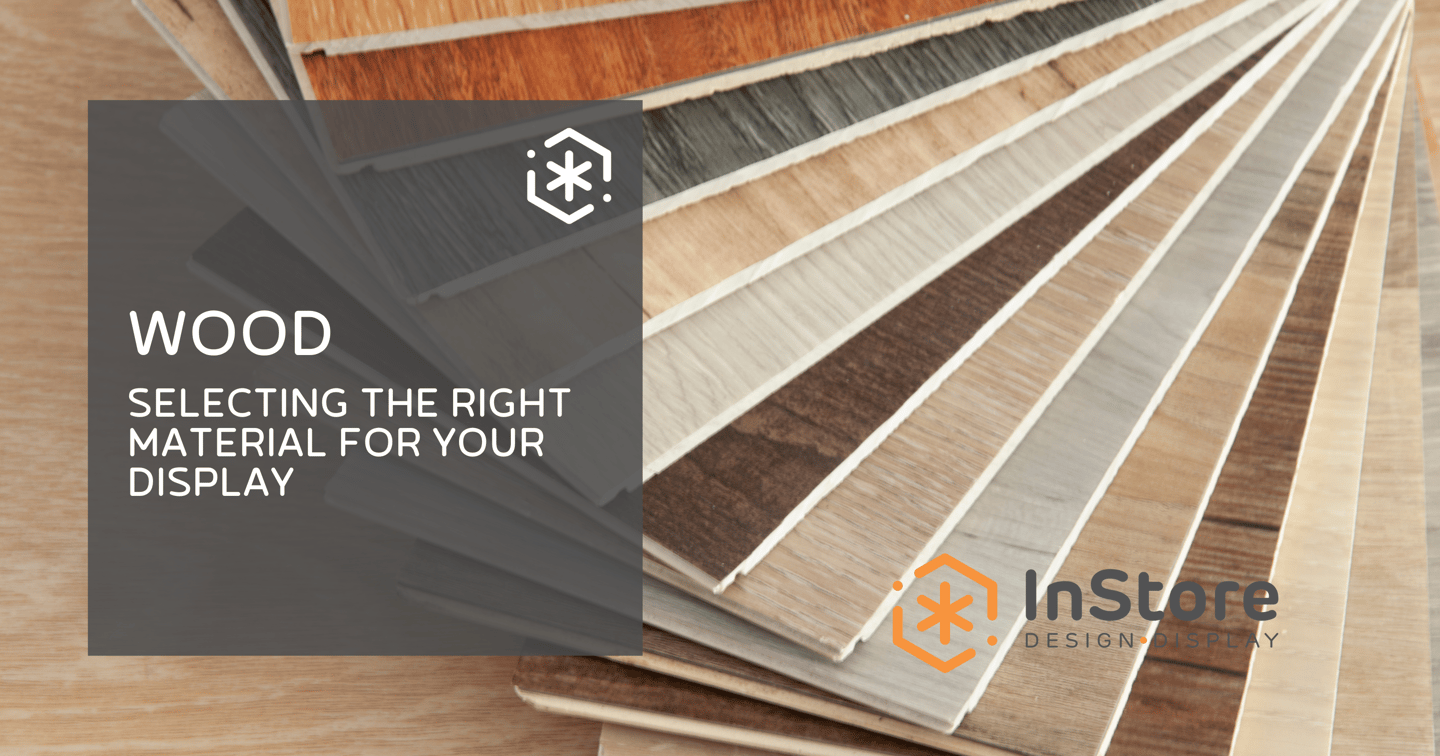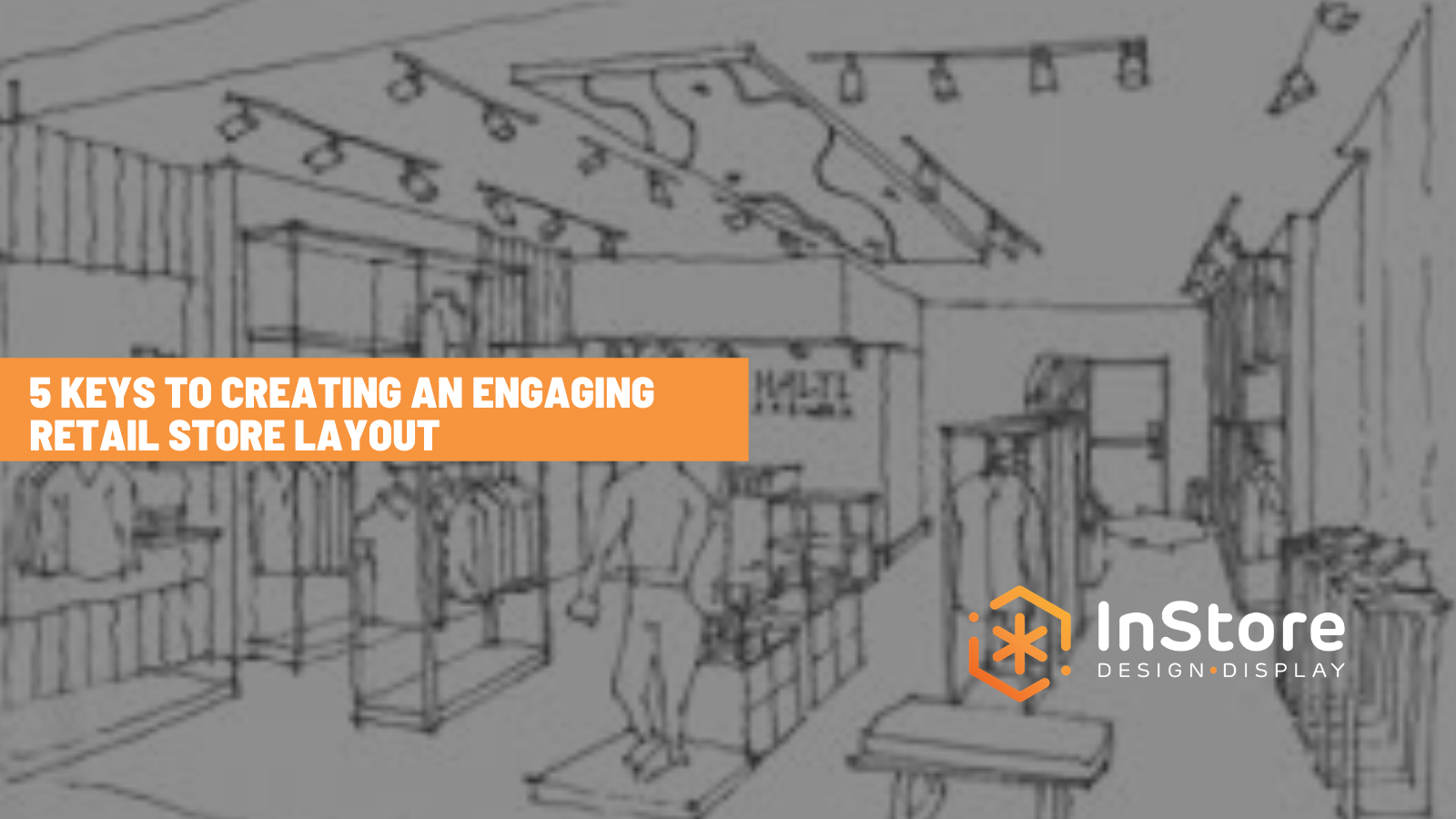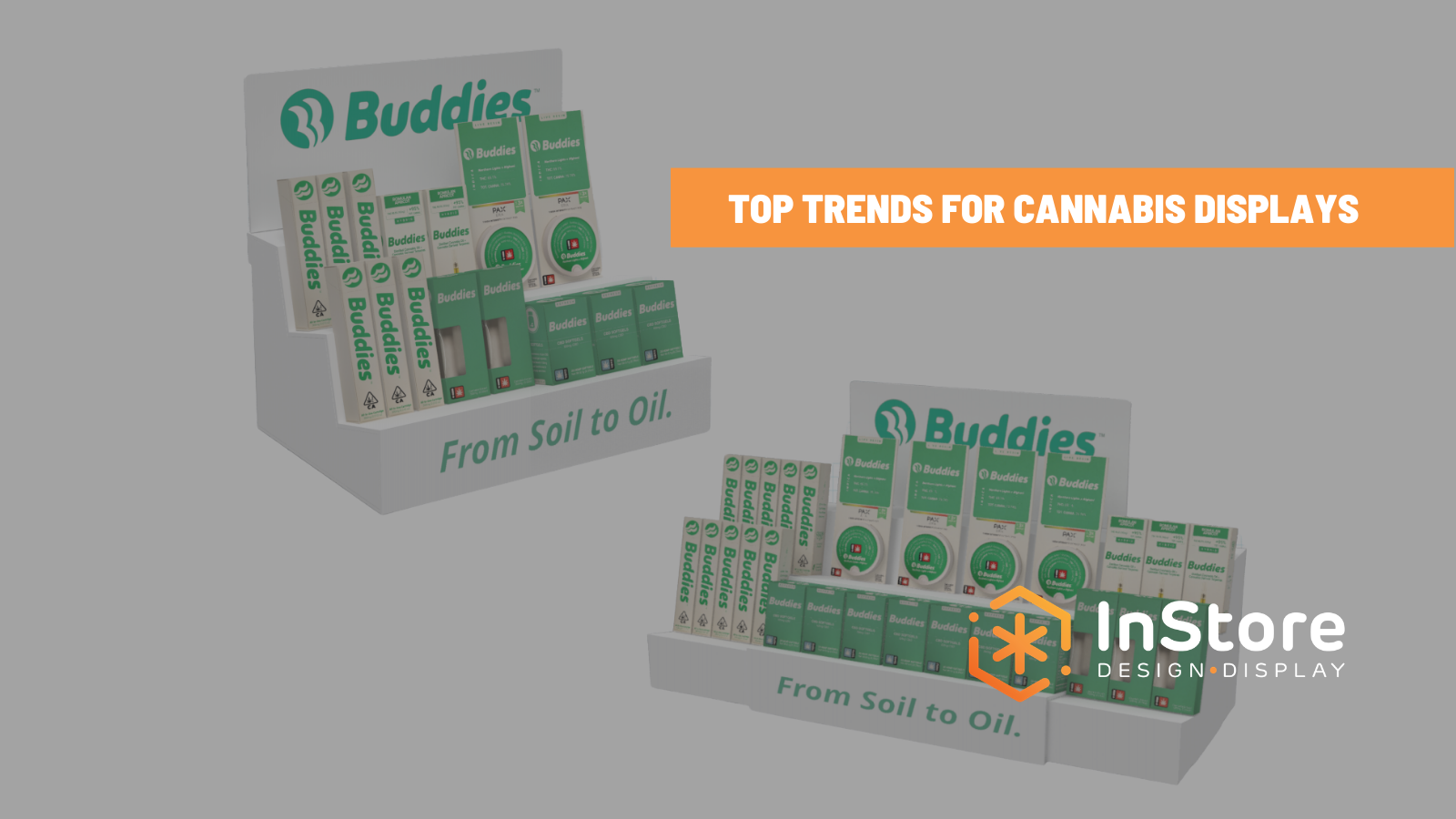
Display Material Selection: Why Wood Helps CPG Products Stand Out
At InStore Design Display, we pride ourselves on providing comprehensive solutions tailored to the unique needs of our clients. As part of our commitment to excellence, we're thrilled to introduce a series of blogs authored by our production guru, Quentin Vowells. With his expertise and insider knowledge, we'll be diving into topics inspired by frequently asked questions from our clients, offering insights and advice to help you navigate the complexities of retail design. Whether you're seeking guidance on material selection, display customization, or shipping efficiencies, Quentin's blogs will serve as a valuable resource to empower your creative endeavors. This first installment focuses on wood as the material of choice for your retail displays.
Questions for Quentin: Wood-based Materials for Retail Displays
What’s the best use of wood-based display materials to help my products stand out in-store?
Navigating the intricate realm of retail design involves weighing every detail's significance, especially when it comes to material selection for in-store displays. In this comprehensive guide, we'll explore the diverse array of wood-based materials available and delve into factors crucial for informed decision-making.
Understanding Material Selection's Importance
Material selection transcends mere aesthetics; it's a strategic choice impacting functionality, durability, sustainability, and brand perception. Wood is typically associated with displays that need to stand the test of time and customer traffic. If a permanent or semi-permanent display is what you are looking for to display your products, then wood is a viable and versatile material for that application. Let’s get into the different choices you can make when it comes to wood.
1. Solid Wood: Timeless Beauty and Durability
Solid wood remains a timeless favorite for its natural beauty, warmth, and durability. Whether oak's rich grain, maple's sleek finish, or the rustic charm of reclaimed wood, it adds authenticity and craftsmanship to in-store displays, enduring high-traffic environments effortlessly.
When considering solid wood for your in-store displays, it's essential to understand the various types available and their unique characteristics. Oak, for example, is renowned for its strength and distinctive grain patterns, making it an excellent choice for shelving units and product showcases where durability and visual appeal are paramount. Maple, on the other hand, boasts a smooth, uniform texture and a light, neutral color palette, making it ideal for creating a clean, modern aesthetic in retail environments. Reclaimed wood, with its weathered patina and one-of-a-kind character, adds a sense of history and sustainability to in-store displays, appealing to eco-conscious consumers seeking authenticity and craftsmanship.
2. Plywood: Versatility and Sustainability
Plywood offers versatility, strength, and sustainability. Its dimensional stability and resistance to warping make it ideal for various applications, offering a blank canvas for creativity while minimizing environmental impact.
When incorporating plywood into your in-store displays, consider the different grades and thicknesses available to ensure optimal performance and aesthetics. Higher-grade plywood, such as Baltic Birch or China Birch, features fewer voids and knots, resulting in a smoother, more uniform surface that's ideal for applications where appearance is critical, such as custom signage or branded fixtures. Thicker plywood panels provide added strength and stability, making them suitable for heavy-duty shelving units or freestanding displays that require structural integrity.
3. Bamboo: Eco-Friendly Elegance
Bamboo stands out for its eco-friendly credentials and natural elegance. As one of the fastest-growing plants, it's renewable and responsible. Bamboo's strength and beauty make it a versatile option for shelving, signage, and more, adding an elegant touch to any retail space.
Incorporating bamboo into your in-store displays offers numerous benefits beyond its sustainability. Bamboo's unique texture and warm, earthy tones create a welcoming atmosphere that resonates with environmentally conscious consumers, enhancing the overall shopping experience. Bamboo's inherent strength and durability ensure longevity, making it a practical choice for high-traffic retail environments where resilience is essential.
4. Medium Density Fiberboard (MDF): Affordable Aesthetics
MDF strikes a balance between affordability and aesthetics, providing a smooth surface ideal for printing and engraving. Whether for signage or fixtures, MDF offers a cost-effective solution without sacrificing visual impact.
When selecting MDF for your in-store displays, it's essential to consider the various grades and finishes available to ensure optimal performance and durability. Higher-density MDF panels offer increased strength and stability, making them suitable for applications where structural integrity is critical, such as large-scale shelving units or display cases. Additionally, opting for a melamine finish provides added protection against scratches, stains, and fading, ensuring your displays maintain their pristine appearance in busy retail environments.
5. Melamine Finish: Durability for Demanding Environments
Melamine finish ensures durability and resilience, resisting scratches, stains, and fading. Applied to substrates like MDF or plywood, it maintains a display’s pristine appearance in busy retail spaces, ensuring lasting beauty and performance.
When incorporating a melamine finish into your in-store displays, it's essential to choose the right color and texture to complement your brand aesthetic and overall design concept. Opting for neutral tones and subtle textures can create a cohesive look that enhances product visibility and draws customers' attention to key focal points within the display. Selecting a high-gloss or matte finish can further enhance the visual appeal of your displays, creating a polished, professional appearance that reinforces brand credibility and sophistication.
Sustainability Considerations
Your source options for wood-based materials range from virgin material from traditionally logged forests to more sustainably logged forests and sources with recycled content. If desired, wood products carrying a label from the Forest Stewardship Council (FSC) can be sourced for display projects to ensure the materials were produced sustainably.
Customization and Precision Techniques
Direct printing, screen printing, and laser engraving enable customization, adding custom graphics, logos, and messaging directly onto substrates. These techniques create eye-catching visuals that captivate shoppers and reinforce brand identity.
When incorporating custom printing and engraving techniques into your wood-based displays, it's essential to collaborate with experienced professionals who can bring your vision to life with precision and attention to detail. Whether you're seeking vibrant graphics, intricate logos, or personalized messaging, working with skilled artisans ensures that your displays meet the highest standards of quality and craftsmanship, enhancing the overall shopping experience and driving customer engagement.
Crafting Immersive Experiences with Material Selection
In the competitive landscape of retail display design, material selection plays a crucial role in shaping the customer experience and driving brand success. Whether you opt for the timeless allure of solid wood, the eco-friendly elegance of bamboo, or the versatility of plywood and MDF, each material offers its own unique advantages and potential for creativity. By prioritizing functionality, durability, sustainability, and brand alignment in your material selection process, you can create in-store displays that resonate with customers, inspire loyalty, and ultimately boost sales.
When you have questions on material selection for your displays, please contact us.

About the Author
Quentin Vowells is InStore Design Display’s Plant Operations Manager. He oversees everything that goes into producing custom displays and getting them in-store—engineering, prototyping, manufacturing, fulfillment, kitting, shipping, and warehouse operations. He brings a discerning eye to the build part of our operation, and quality control is always on his mind. Connect with Quentin on LinkedIn where he regularly talks about #displayproduction, #designformanufacturing, #designengineering, and #qualitycontrol.
Subscribe Here
Stay up-to-date on what's happening on our podcast and blog.



